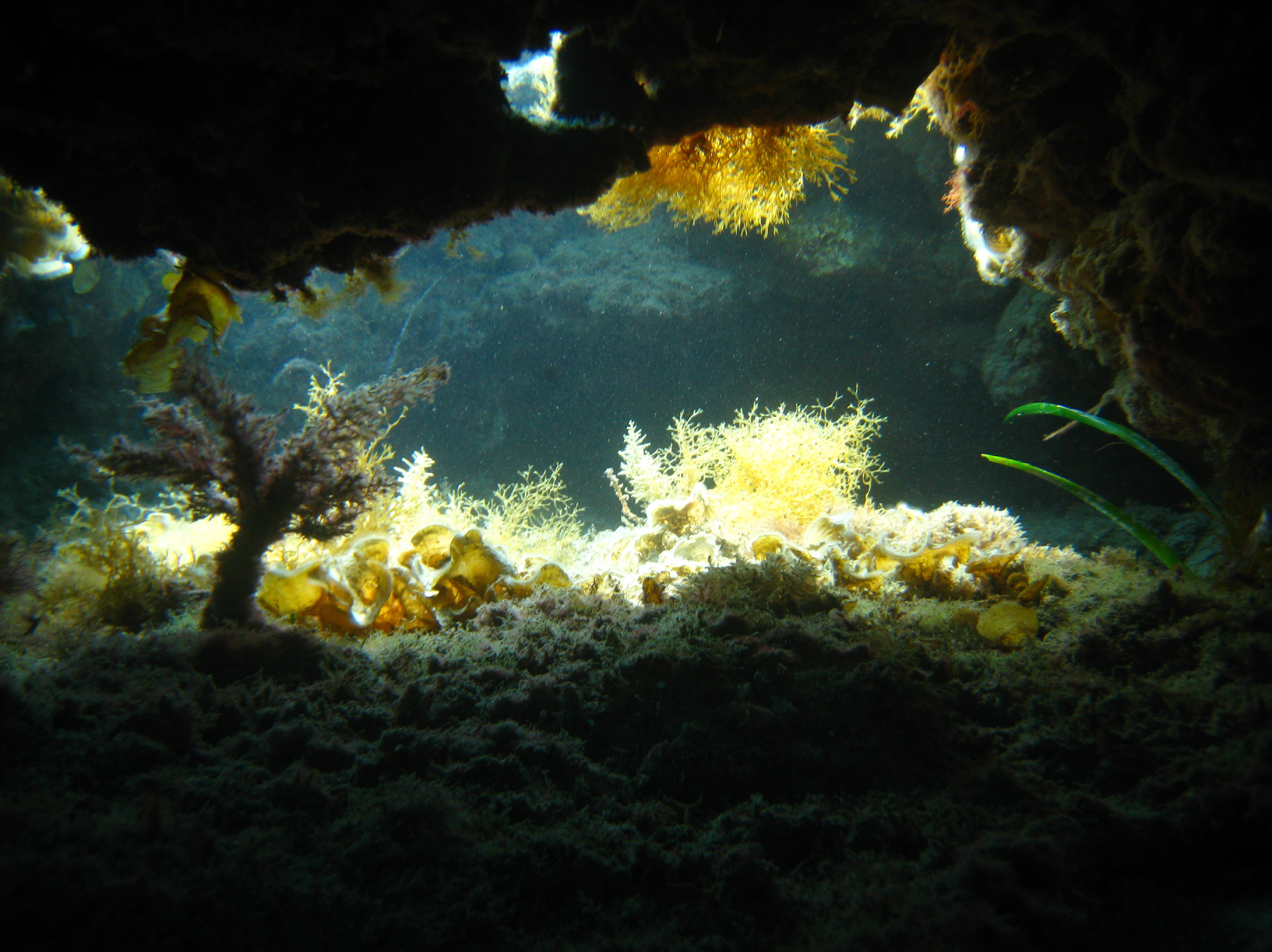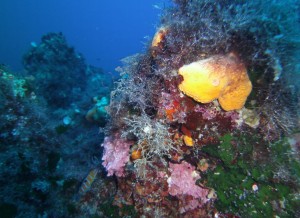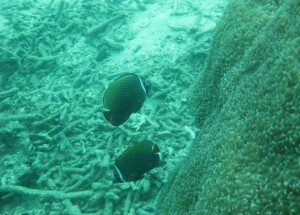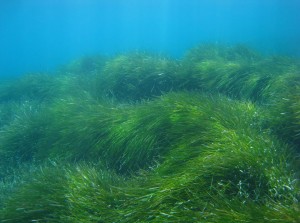News
A Simplified Report About Marine Conservation Biology

IN HIS DEBUT ARTICLE FOR SCUBAVERSE.COM, THE DIRECTOR OF BIOLOGY AND CONSERVATION FOR THE CMAS SCIENTIFIC COMMITTEE, DR. STAVROS KANIKLIDES PHD, TELLS US WHY MARINE CONSERVATION BIOLOGY COULD PREVENT – AND QUITE POSSIBLY EVEN SAVE – THE PLANET FROM TOTAL MARINE SYSTEM BREAKDOWN.
WHY MARINE BIOLOGY AND CONSERVATION IS NEEDED
Pollution of marine systems is a common subject of discussion among conservationists today. The adverse effects of the deterioration of marine systems around the world cannot be overemphasized. Indeed, many communities around the world are now cognizant of the importance of conserving marine environments. CMAS (World Underwater Federation) Scientists continue to make their contribution by educating their members and to evoke public awareness and understanding.
Marine Conservation Biology is a new and fast growing discipline in universities and marine research institutions. The science aims at reducing the fast pace of the collapse of marine systems. In fact, the ultimate long term objective is to stop it altogether.
THE SPECIES THREATENED OR IN DANGER OF EXTINCTION
Conservation of biodiversity within marine environments was a major factor in the formation of Marine Conservation Biology. It is a major area of research and scientific studies. Information and scientific data relating to the loss or deterioration of marine life is essential in the efforts to reverse the trend. It is possible to curb the menace to marine life, if there is ready and reliable data concerning the impending threats and areas of urgency.
MODERATE FISH EXPLOITATION FOR FOOD SECURITY
Many societies rely on seafood as a major component of their nutritional needs. It must be realized that there is a need to maintain a balance in the marine systems if the seafood and fish is to be sustained. It is an established fact that the marine systems supply humanity with the highest quality natural food. Some sea creatures such as the anemone and some species of fish are of medicinal value. For example, Pediatricians have over the years advised mothers and other care givers in charge of children to constantly use cod liver oil. This nutritional supplement contains a critical form of protein referred to as omega3. It has been hailed as being invaluable for the brain development of children in their post lactating ages up to their teenage years.
ANTHROPOGENIC ACTIVITIES
Unfortunately, the knowledge of the facts above has led to excesses in the harvesting of fish and seafood. Fishing companies have employed destructive methods of harvesting. Trawling has been cited as a major threat to marine biodiversity. In fact, it has led to extinction of some species due to the way it sweeps habitats indiscriminately. It does not allow for gradual growth of species. Many governments have consequently banned trawling as a method of fishing, thanks to sensitization from Marine Biology researchers.
POLLUTION
The commonest and most obvious tragedy to befall marine life is oil spillage. Oil tankers have, on several occasions, leaked on the high seas. The almost immediate effects of such accidents are witnessed on the shores around the world. Thousands of dead fish have been deposited on the beaches for all humanity to see. It is all too obvious that what we witness directly is only a sample of the larger damage that lies in the depths of the water systems. It takes colossal amounts of money, human resource and time to clear the mess left behind by oil spillage. It takes many years, if ever, to rebuild such marine environments and reverse the long term effects of such water pollution.
MARINE CONSERVATION BIOLOGY IS THE SOLUTION
In order to make significant progress in the efforts of marine conservation, scientific understanding of the problem is a prerequisite. The role of marine biology conservation must be considered. This is a discipline that has emerged out of the need to dedicate more effort in the area of marine life conservation. Marine Conservation Biology borrows a lot from marine biology. Indeed, it is an offshoot of the latter. The world needs a source of reliable data concerning the status of marine environments. Governments and policy makers within organizations, with a stake in marine systems, need data in order to form appropriate policies. There is a need for scientific data.
SCIENTIFIC UNDERSTANDING AND DATA NEEDED
For the efforts of conservation to bear fruit, there must be a basis for an action plan. Such a plan will be helped if there is knowledge of data on the threats to marine life, and the nature and magnitude of such threats. Such data signals the concerned parties of the urgency to act. Marine Conservation Biology may be viewed as a hybrid field of study, derived from a wide spectrum of related disciplines: marine science, oceanography, marine ecology, and marine biology. The need for a more elaborate approach to solving marine conservation challenges emanates from the fact that the problems are complex. The approach towards solving them must be of a multi-facet design. One major challenge is that marine ecosystems have totally collapsed in some regions. It is, thus, a crisis.
CAUSES OF DETERIORATION OF MARINE ENVIRONMENTS
 While there are many causes of declining marine systems – some beyond human control – the main ones are conspicuous and directly linked to human error. The number of marine species threatened with extinction or already extinct is alarming. Failure to recognize that there is need to strike a balance between the immediate economic urge and future security is a major undoing in the effort towards conservation of marine systems. Extravagant methods such as trawling continue to wreck havoc in the sea. The need for biodiversity cannot be overemphasized. Overfishing is a phenomenon that continues to trouble marine conservationists. Yet, this is a cause that could easily be curbed if world governments gave conservation the attention it deserves. Dwindling stocks of fish have a direct effect on the health of populations that over-rely on fish for nutrition. Lack of scientific data has led to continued overexploitation of marine resources. There is a glaring need to mobilize world authorities to curb fishing activities.
While there are many causes of declining marine systems – some beyond human control – the main ones are conspicuous and directly linked to human error. The number of marine species threatened with extinction or already extinct is alarming. Failure to recognize that there is need to strike a balance between the immediate economic urge and future security is a major undoing in the effort towards conservation of marine systems. Extravagant methods such as trawling continue to wreck havoc in the sea. The need for biodiversity cannot be overemphasized. Overfishing is a phenomenon that continues to trouble marine conservationists. Yet, this is a cause that could easily be curbed if world governments gave conservation the attention it deserves. Dwindling stocks of fish have a direct effect on the health of populations that over-rely on fish for nutrition. Lack of scientific data has led to continued overexploitation of marine resources. There is a glaring need to mobilize world authorities to curb fishing activities.
INDUSTRIAL EFFLUENT
Fishing could, sometimes, pass as an act of survival. Yet, water bodies continue to be polluted by poisonous non degradable chemical elements flowing from farms and industrial plants. High mercury levels in the sea lead to the death of fish. Governments have been brought to the realization that industries have to devise safer methods of disposing industrial waste. Some governments have effectively formed special agencies to monitor and regulate the activities of industrial plants within their jurisdictions.
POISONOUS EFFUSIONS AND AGRICULTURAL CHEMICALS
 Factories contribute to the deterioration of marine life directly and indirectly. Apart from discharging effluent directly into rivers, lakes and oceans, some factories release poisonous and non-degradable gases into the atmosphere. These combine with rain water and subsequently drain into marine systems. When the acidity and alkalinity levels are altered, marine systems suffer. It must be understood that marine systems thrive at certain specific optimal levels of acidity and temperature. Agrochemical companies continue to develop chemical formulas and fertilizers for use in the agricultural sector. Rains fall and wash these chemicals downstream into water bodies that act as home to marine life. Indeed, there is evidence that the high mercury levels witnessed in some water bodies is directly linked to certain agricultural chemicals. Although the use of mercury is widely monitored and controlled by international control bodies, there is an indication that some countries do not heed such warnings.
Factories contribute to the deterioration of marine life directly and indirectly. Apart from discharging effluent directly into rivers, lakes and oceans, some factories release poisonous and non-degradable gases into the atmosphere. These combine with rain water and subsequently drain into marine systems. When the acidity and alkalinity levels are altered, marine systems suffer. It must be understood that marine systems thrive at certain specific optimal levels of acidity and temperature. Agrochemical companies continue to develop chemical formulas and fertilizers for use in the agricultural sector. Rains fall and wash these chemicals downstream into water bodies that act as home to marine life. Indeed, there is evidence that the high mercury levels witnessed in some water bodies is directly linked to certain agricultural chemicals. Although the use of mercury is widely monitored and controlled by international control bodies, there is an indication that some countries do not heed such warnings.
MARINE CONSERVATION TECHNOLOGIES
Marine Conservation Biology has developed conservation technologies that could help resolve the perennial problem of marine life degradation. These are mechanisms and strategies used to conserve and protect marine life. Some of the mechanisms employed by marine biology conservationists include the protection of designated marine areas. This approach, commonly referred to as MPA, enables the growth and expansion of volumes of marine life within these protected areas. Regulation means that the areas are opened up to exploitation at specified times when the conservationists are satisfied that the volumes have exceeded the carrying capacities of those areas.
TRACKING DEVICES
Monitoring the numbers of sea creatures is pertinent in the use of data to conserve marine systems. Some species of fish and sizable animals are monitored by use of RFIs. The sea creatures are captured; radio frequency devices are then attached on their bodies. They are then released to roam freely. Their movement is monitored by special devices in the hands of the Marine Conservation Biology scientists. This way, their numbers are closely tracked and the rate of increase or decrease is recorded. Some organizations have joined hands with the conservationists to ensure that there is responsible exploitation of marine resources. The Turtle Excluder Device (TED) is a special device designed to ensure that turtles are excluded from the trawlers meant to catch shrimps. This device also keeps larger animals out of the trawling nets, consequently avoiding wastage.
DEVICES
Another method devised by marine biology conservationists is biologging. In this method, small tags are attached to animals and used to collect data. The data varies from movement, behavioral patterns and the environmental changes. This technology has enabled researchers to access information about deep sea animals. This was, previously, a challenge to research work in conservation.
SCUBA DIVERS’ OBSERVATIONS
Scuba diving is employed in the monitoring of the shark and dolphin populations. Data on their abundance and distribution can be used to devise strategies to conserve them in their habitats. Recreational scuba divers can be engaged to provide useful data on such deep sea marine life. Marine conservationists can access useful information by using recreational scuba divers’ observations in regular diving locations.
SCUBA DIVERS CAN HELP MARINE CONSERVATION AND PROTECTION
Observation is a major advantage that scuba diving has over other marine conservation data collection methods. Divers can move closer to the marine habitats of the creatures under study, and capture images that reveal more information than could be possible by other methods. Yet, scuba diving is also widely acclaimed as a recreational activity. It is an aspect of ecotourism that should be encouraged. CMAS Marine biology scientists via the specialty certification courses are providing to scuba divers, academics, and the non-diving community substantial professional educational lecturing and underwater field training techniques, focusing on the understanding of the concepts of marine biology and conservation. The certifications in underwater marine biology are recognized by UNESCO and 120 National Federations and other academic scientific centers globally.
UNDERSTANDING THE UNDERWATER ENVIRONMENT
 Marine Conservation Biology can be defined as a scientific study concerned with protecting life in water bodies. In an effort to conserve marine life, a marine biology conservationist also seeks to secure the habitats that support marine life. The habitats are held in place by various physical and environmental factors. It turns out that a marine biology conservationist will delve and deal with issues that are indirectly related to marine life, yet, such factors serve as the bedrock of the survival and sustainability of marine ecosystems. It is a study that inevitably combines knowledge from other related disciplines. Marine Conservation Biology borrows heavily from marine science, marine biology, oceanography and fishing science. Marine Conservation Biology has an advantage over the mentioned disciplines because it tends to be a more specialized field of study. It zeroes in on the specific elements of marine systems and marine life conservation. It seeks to develop more practical approaches in marine life conservation by involving communities and governments in the conservation efforts.
Marine Conservation Biology can be defined as a scientific study concerned with protecting life in water bodies. In an effort to conserve marine life, a marine biology conservationist also seeks to secure the habitats that support marine life. The habitats are held in place by various physical and environmental factors. It turns out that a marine biology conservationist will delve and deal with issues that are indirectly related to marine life, yet, such factors serve as the bedrock of the survival and sustainability of marine ecosystems. It is a study that inevitably combines knowledge from other related disciplines. Marine Conservation Biology borrows heavily from marine science, marine biology, oceanography and fishing science. Marine Conservation Biology has an advantage over the mentioned disciplines because it tends to be a more specialized field of study. It zeroes in on the specific elements of marine systems and marine life conservation. It seeks to develop more practical approaches in marine life conservation by involving communities and governments in the conservation efforts.
THE UNDERWATER WORLD
The world below the surface of small and large water bodies is a complex ecosystem. It works in ways similar to the way the dry land ecosystems work. The main difference is that little is known about the interrelationships of life in the sea. Marine biologists have made efforts to uncover the mysterious world under the sea, yet we continue to encounter new discoveries in the world’s oceans nearly every year. Indeed, marine scientists admit that there is a lot more data to collect and phenomena to uncover. The main reason for this mystery is obviously the fact that it takes more resources to carry out research in the deep sea, risks notwithstanding. But the bottom-line of conservation, whether on dry land or in the sea, is ensuring that biodiversity is maintained. It is the only sure way to keep a balance that supports life. A threat to biodiversity is a threat to the survival of all organisms and human life. It should be remembered that every organism occupies a special place in the ecosystem. If a certain species is allowed to become extinct, there will be a crisis in the ecosystem. This can easily lead to devastating effects on the ecosystem in the long run. In fact, the extinction of any species is usually a precedent to a dangerous spiral that leads to the loss of other species and subsequent change in adaptation behavior and trends in other species. These adjustments are always critical if an organism is to survive in the new order.
OBSERVATION
In the sea, for example, coral reefs are core habitats for a wide variety of fish and other marine organisms. In fact, the coral reef is regarded as the nerve centre for the survival of stable marine ecosystems. The coral reefs act as the shelter for fish. They protect them from harsh sea environments and the effects of turbulent water currents. Many species of fish lay their eggs in the coral reefs. They also recede to the reefs for mating and rest. Humans have taken special interest in coral reefs across the world. They are a major attraction in ecotourism. They subsequently serve an economic purpose, thus indirectly supporting life away from the sea. Yet, it is their attraction that is also the main obstacle to conservationists. Humans have also discovered that coral reefs house large numbers of fish. The reefs are consequently a target of commercial fishing companies. These fishing expeditions in the deep sea often result in the destruction of coral reefs. Some desperate methods to get the fish out of the reefs have been used. The use of dynamite has been cited in some areas as a major cause of the dwindling fish populations. The result is the destruction of fish habitats and eventual reduction in fish populations.
OTHER DESTRUCTIVE HUMAN EFFECTS ON MARINE SYSTEMS
The reckless discharge of effluent and usage of chemicals in agriculture and insecticides has a negative impact on marine life. Acidification of marine habitats disturbs the systems. The excessive carbonation is also said to reduce the formation of coral reefs. Some of these chemicals have an eroding effect on the coral reefs. Some of the organisms suffer directly and die. Others are handicapped and subsequently fail to compete with others favorably for survival and food.
METHODOLOGIES AND TECHNIQUES OF PROTECTING MARINE LIFE
Although conservationists have constantly made efforts to ensure that marine systems are saved from destruction, it is important that all human beings make their contribution to reduce the destruction of marine ecosystems. A simple practical step is by ensuring that the level of carbon emissions as a result of human activity is significantly reduced. Communities are encouraged to make use of biodegradable fuels. Increased use of energy sources such as solar can significantly reduce the rate of CO2 emissions. Marine conservationists have employed such technologies as a way of protecting certain marine areas from human interference. Marine populations have even been transferred from one location to another in order to bolster the numbers and encouraging responsible fishing through the sensitization of communities to adapt sustainable fishing methods.
HOBBIES FOR CONSERVATION
Scuba divers and tourist agencies dealing in scuba diving activities are encouraged to educate the public about the benefits of responsible diving. Leading World organizations such as the United Nations Environmental Program (UNEP) have actively encouraged these conservation strategies.
INTERNATIONAL LAWS AND TREATIES
Apart from technology and local initiatives, efforts have been made on the international arena to ensure that countries accede to the need for marine conservation and build a legal back up for the other techniques of protecting marine life.
To find out more about the CMAS Scientific Committee and the work that they do, visit www.cmas.org/science/about-sci.
News
Dive Worldwide Announces Bite-Back as its Charity of the Year

Over the next 12 months, specialist scuba holiday company Dive Worldwide will be supporting Bite-Back Shark & Marine Conservation with donations collected from client bookings to any one of its stunning dive destinations around the world. The independently-owned operator expects to raise £3000 for the UK charity.
Manager at Dive Worldwide, Phil North, said: “We’re especially excited to work with Bite-Back and support its intelligent, creative and results-driven campaigns to end the UK trade in shark products and prompt a change in attitudes to the ocean’s most maligned inhabitant.”
Bite-Back is running campaigns to hold the media to account on the way it reports shark news along with a brand new nationwide education programme. Last year the charity was credited for spearheading a UK ban on the import and export of shark fins.
Campaign director at Bite-Back, Graham Buckingham, said: “We’re enormously grateful to Dive Worldwide for choosing to support Bite-Back. The company’s commitment to conservation helps set it apart from other tour operators and we’re certain its clients admire and respect that policy. For us, the affiliation is huge and helps us look to the future with confidence we can deliver against key conservation programmes.”
To launch the fundraising initiative, Phil North presented Graham Buckingham with a cheque for £1,000.
Visit Dive Worldwide to discover its diverse range of international scuba adventures and visit Bite-Back to learn more about the charity’s campaigns.
MORE INFORMATION
Call Graham Buckingham on 07810 454 266 or email graham@bite-back.com
Gear News
Scubapro Free Octopus Promotion 2024

Free Octopus with every purchase of a SCUBAPRO regulator system
Just in time for the spring season, divers can save money with the FREE OCTOPUS SPRING PROMOTION! Until July 31st SCUBAPRO offers an Octopus for free
with every purchase of a regulator system!
Get a free S270 OCTOPUS with purchase of these combinations:
MK25 EVO or MK19 EVO with A700
MK25 EVO or MK19 EVO with S620Ti
MK25 EVO or MK19 EVO with D420
MK25 EVO Din mit S620Ti-X
Get a free R105 OCTOPUS with purchase of the following combinations:
MK25 EVO or MK19 EVO with G260
MK25 EVO or MK17 EVO with S600
SCUBAPRO offers a 30-year first owner warranty on all regulators, with a revision period of two years or 100 dives. All SCUBAPRO regulators are of course certified according to the new European test standard EN250-2014.
Available at participating SCUBAPRO dealers. Promotion may not be available in all regions. Find an authorized SCUBAPRO Dealer at scubapro.com.
More information available on www.scubapro.com.
-

 News3 months ago
News3 months agoHone your underwater photography skills with Alphamarine Photography at Red Sea Diving Safari in March
-

 News3 months ago
News3 months agoCapturing Critters in Lembeh Underwater Photography Workshop 2024: Event Roundup
-

 Marine Life & Conservation Blogs3 months ago
Marine Life & Conservation Blogs3 months agoCreature Feature: Swell Sharks
-

 Blogs2 months ago
Blogs2 months agoMurex Resorts: Passport to Paradise!
-

 Blogs2 months ago
Blogs2 months agoDiver Discovering Whale Skeletons Beneath Ice Judged World’s Best Underwater Photograph
-

 Gear Reviews2 weeks ago
Gear Reviews2 weeks agoGEAR REVIEW – Revolutionising Diving Comfort: The Sharkskin T2 Chillproof Suit
-

 Marine Life & Conservation2 months ago
Marine Life & Conservation2 months agoSave the Manatee Club launches brand new webcams at Silver Springs State Park, Florida
-

 Gear Reviews3 months ago
Gear Reviews3 months agoGear Review: Oceanic+ Dive Housing for iPhone














